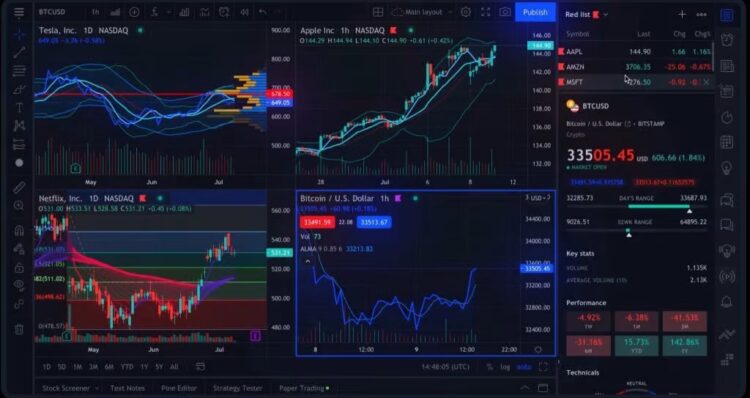
Advanced technical analysis: Indicators and strategies for professional traders
admin | August 19, 2023 | 0 | FinanceAdvanced technical analysis is a cornerstone of professional trading, providing traders with valuable insights into market trends, price movements, and potential entry and exit points. While fundamental analysis considers the underlying value of assets, technical analysis focuses on historical price and volume data to predict future market behaviour.
This article will explore various technical indicators and strategies professional traders employ to gain a competitive edge in the financial markets.
Moving averages and trend analysis
Moving averages are fundamental tools in technical analysis, providing traders with a smooth representation of price trends over a specified period. Simple Moving Averages (SMA) and Exponential Moving Averages (EMA) are two common types used in trading.
Traders often use moving averages in online stock trading to identify trends and potential trend reversals. When the price of an asset crosses above its moving average, it may signal an uptrend, while a cross below the moving average could indicate a downtrend. Additionally, the convergence and divergence of multiple moving averages of different timeframes can generate powerful signals, such as the Moving Average Convergence Divergence (MACD) indicator, which helps traders detect changes in momentum.
Relative Strength Index (RSI) and overbought/oversold conditions
The Relative Strength Index (RSI) serves as a momentum oscillator, gauging the speed and magnitude of price movements. Ranging between 0 and 100, it aids in identifying market conditions of overbought and oversold assets. A reading above 70 suggests potential overbought status, indicating a rapid price surge that a correction may follow.
An RSI below 30 indicates that the asset may be oversold, presenting a potential buying opportunity as the price is expected to rebound. Professional traders often use RSI with other technical indicators to confirm potential trade signals.
Fibonacci retracement and extension levels
Fibonacci retracement and extension levels are based on the Fibonacci sequence, a mathematical concept that appears in various aspects of nature and finance. In trading, Fibonacci levels are used to identify potential support and resistance levels and predict the extent of price movements during a trend.
Traders draw Fibonacci retracement levels from the high to the low of a significant price move. The expected retracement levels are 23.6%, 38.2%, 50%, 61.8%, and 78.6%. These levels are considered potential support or resistance zones where prices may stall or reverse temporarily. Conversely, Fibonacci extension levels are drawn beyond the original price move to project potential price targets. The standard extension levels are 61.8%, 100%, 161.8%, 261.8%, and 423.6%.
Bollinger bands and volatility analysis
Bollinger Bands are market volatility indicators, comprising a centerline (simple moving average) and two standard deviation lines above and below it. These bands expand or contract based on the market’s volatility level. Wider bands indicate higher volatility, while narrower bands suggest lower volatility. Observing these fluctuations allows traders to gain valuable insights into market conditions and make informed decisions.
Traders use Bollinger Bands to identify periods of high or low volatility, which can help inform their trading decisions. When the price moves close to the upper band, it may indicate an overbought condition, while approaching the lower band may signal an oversold condition. Additionally, Bollinger Bands can spot potential breakouts when the price moves beyond the bands.
Volume analysis and price confirmation
Volume analysis is a crucial aspect of advanced technical analysis that complements price movements. Volume represents the number of shares or contracts traded during a given period, and it helps traders gauge the strength of price trends and potential reversals. High volume during price advances can confirm a bullish trend, while high volume during declines can signal a bearish trend.
Traders often use volume analysis with price patterns and technical indicators to validate their trading decisions. For instance, a breakout from a price pattern accompanied by high volume provides more decisive confirmation of the pattern’s validity. On the other hand, a divergence between price and volume can indicate a potential trend reversal.
By integrating volume analysis into their trading strategies, professional traders gain a deeper understanding of market dynamics and are better equipped to navigate the complexities of the financial markets.
To sum things up
Advanced technical analysis plays a vital role in the decision-making process of professional traders. By utilising various technical indicators and strategies, traders can gain valuable insights into market trends, momentum, and potential entry and exit points. Moving averages clearly represent price trends, while the RSI helps identify overbought and oversold conditions. Fibonacci retracement and extension levels provide traders with potential support, resistance, and price targets, and Bollinger Bands assist in analysing market volatility.













